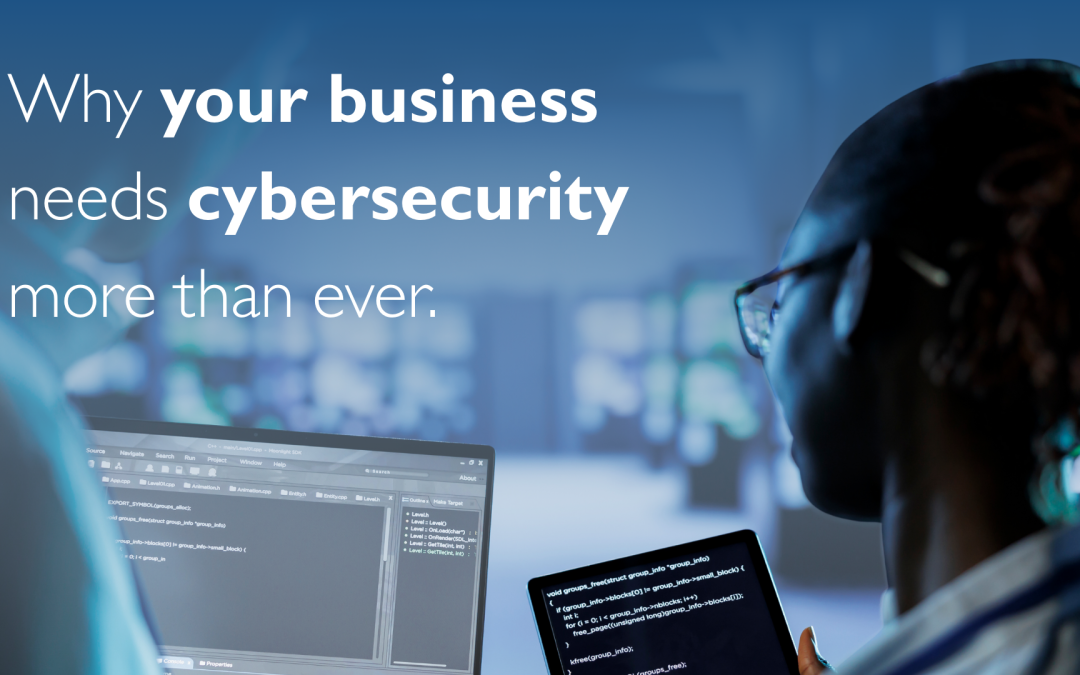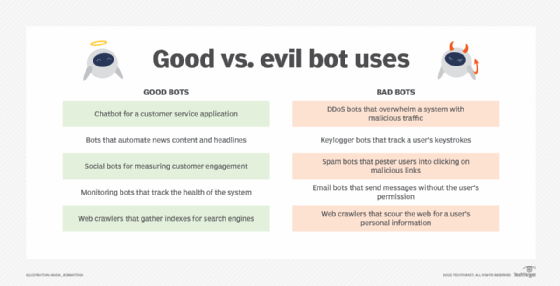Why Your Business Needs Cybersecurity More Than Ever? In today's hyper-connected digital world, cybersecurity is no longer a...


Why Your Business Needs Cybersecurity More Than Ever? In today's hyper-connected digital world, cybersecurity is no longer a...

Worried about being a target for phishing attacks? Protect your company today!

Understand the Holiday Season Cyber Threats The holiday season is a time for joy, celebration, and generosity. However, this...

Cybercriminals steal credit card? Cybercriminals have various methods at their disposal to hack and exploit credit card...

This in-depth cybersecurity planning guide provides information and advice to help organizations develop a successful strategy...
By Sharon Shea, Executive Editor and Isabella Harford, Published on TechTarget 26 Jun 2024
Malware is one of the greatest security threats enterprises face. Security departments must actively monitor networks to catch and contain malware before it can cause extensive damage. With malware, however, prevention is key. However, to prevent an attack, it is critical to first understand what malware is, along with the most common types of malware.
Attackers use malware, short for malicious software, to intentionally harm and infect devices and networks. The umbrella term encompasses many subcategories, including the following:
Let’s explore each in further detail.

A computer virus infects devices and replicates itself across systems. Viruses require human intervention to propagate. Once users download the malicious code onto their devices — often delivered via malicious advertisements or phishing emails — the virus spreads throughout their systems. Viruses can modify computer functions and applications; copy, delete and exfiltrate data; encrypt data to perform ransomware attacks; and carry out DDoS attacks.

The Zeus virus, first detected in 2006, is still used by threat actors today. Attackers use it to create botnets and as a banking Trojan to steal victims’ financial data. Zeus’s creators released the malware’s source code in 2011, enabling threat actors to create updated and more threatening versions of the original virus.

A computer worm self-replicates and infects other computers without human intervention. This malware inserts itself in devices via security vulnerabilities or malicious links or files. Once inside, worms look for networked devices to attack. Worms often go unnoticed by users, usually disguised as legitimate work files.
WannaCry, also a form of ransomware, is one of the most well-known worms. The malware took advantage of the EternalBlue vulnerability in outdated versions of Windows’ Server Message Block protocol. In its first year, the worm spread to 150 countries. The next year, it infected nearly 5 million devices.
Ransomware locks or encrypts files or devices and forces victims to pay a ransom in exchange for reentry. While ransomware and malware are often used synonymously, ransomware is a specific form of malware.
Common types of ransomware include the following:
Well-known ransomware variants include REvil, WannaCry and DarkSide, the strain used in the Colonial Pipeline attack.
Data backups were long the go-to defense against ransomware. With a proper backup, victims could restore their files from a known-good version. With the rise of extortionware, however, organizations must follow other measures to protect their assets from ransomware, such as deploying advanced protection technologies and antimalware.
A bot is a self-replicating malware that spreads itself to other devices, creating a network of bots, or a botnet. Once infected, devices perform automated tasks commanded by the attacker. Botnets are often used in DDoS attacks. They can also conduct keylogging and send phishing emails.
Mirai is a classic example of a botnet. This malware, which launched a massive DDoS attack in 2016, continues to target IoT and other devices today. Research also shows botnets flourished during the COVID-19 pandemic. Infected consumer devices — common targets of Mirai and other botnets — used by employees for work or on the networks of employees working on company-owned devices from home enable the malware to spread to corporate systems.

A Trojan horse is malicious software that appears legitimate to users. Trojans rely on social engineering techniques to invade devices. Once inside a device, the Trojan’s payload — malicious code — is installed to facilitate the exploit. Trojans give attackers backdoor access to a device, perform keylogging, install viruses or worms, and steal data.
Remote access Trojans (RATs) enable attackers to take control of an infected device. Once inside, attackers can use the infected device to infect other devices with the RAT and create a botnet.
An example of a Trojan is Emotet, first discovered in 2014. Despite a global takedown at the beginning of 2021, attackers have rebuilt Emotet and it continues to help threat actors steal victims’ financial information.
A keylogger is surveillance malware that monitors keystroke patterns. Threat actors use keyloggers to obtain victims’ usernames and passwords and other sensitive data.
Keyloggers can be hardware or software. Hardware keyloggers are manually installed into keyboards. After a victim uses the keyboard, the attacker must physically retrieve the device. Software keyloggers, on the other hand, do not require physical access. They are often downloaded by victims via malicious links or attachments. Software keyloggers record keystrokes and upload the data to the attacker.
The Agent Tesla keylogger first emerged in 2014. The spyware RAT still plagues users, with its latest versions not only logging keystrokes, but also taking screenshots of victims’ devices.
Password managers help prevent keylogger attacks because users don’t need to physically fill in their usernames and passwords, thus preventing a keylogger from recording them.
A rootkit is malicious software that enables threat actors to remotely access and control a device. Rootkits facilitate the spread of other types of malware, including ransomware, viruses and keyloggers.
Rootkits often go undetected, because once inside a device, they can deactivate antimalware and antivirus software. Rootkits typically enter devices and systems through phishing emails and malicious attachments.
To detect rootkit attacks, cybersecurity teams should analyze network behaviour. Set alerts, for example, if a user who routinely logs on at the same time and in the same location every day suddenly logs on at a different time or location.
The first rootkit, NTRootkit, appeared in 1999. Hacker Defender, one of the most widely deployed rootkits of the 2000s, was released in 2003.
Spyware is malware that downloads onto a device without the user’s knowledge. It steals users’ data to sell to advertisers and external users. Spyware can track credentials and obtain bank details and other sensitive data. It infects devices through malicious apps, links, websites and email attachments. Mobile device spyware, which can spread via Short Message Service and Multimedia Messaging Service, is particularly damaging because it tracks a user’s location and has access to the device’s camera and microphone. Adware, keyloggers, Trojans and mobile spyware are all forms of spyware.
Pegasus is a mobile spyware that targets iOS and Android devices. It was first discovered in 2016, at which time it was linked to Israeli technology vendor NSO Group. Apple filed a lawsuit against the vendor in November 2021 for attacking Apple customers and products. Pegasus was also linked to the assassination of Saudi journalist Jamal Khashoggi in 2018.

Fileless malware, unlike traditional malware, does not involve attackers installing code on victims’ hard drives. Rather, it uses living-off-the-land techniques to take advantage of legitimate and presumably safe tools — including PowerShell, Microsoft macros and Windows Management Infrastructure — to infect a victims’ systems. Fileless malware resides in computer memory. Without an executable, it can evade file- and signature-based detection tools, such as antivirus and antimalware.
Note that fileless malware might indeed have files, but the attacks leave no files behind after completing the attack, making attribution difficult.
Frodo, Emotet and Sorebrect are examples of fileless malware.
Cryptomining — the process of verifying transactions within a blockchain — is highly profitable but requires immense processing power. Miners are rewarded for each blockchain transaction they validate. Malicious cryptomining, known as cryptojacking, enables threat actors to use an infected device’s resources — including electricity and computing power — to conduct verification. This can lead to performance degradation of the infected device and loss of money due to stolen resources.
Coinhive, Vivin, XMRig Lucifer, WannaMine and RubyMiner are examples of cryptomining malware.
Also known as wiperware or data wipers, this malware is often categorized as a type of ransomware. Like ransomware, its aim is to block access to the victim’s data. Unlike ransomware, it destroys the data rather than hold it for a ransom. The aim of wiper malware attacks is not financial gain, but to erase data. Malicious actors often use wiper malware to cover their tracks after an attack.
NotPetya, Azov, HermeticWiper and WhisperGate are examples of wiper malware.
Adware is software that displays or downloads unwanted advertisements, typically in the form of banners or pop-ups. It collects web browser history and cookies to target users with specific advertisements.
Not all adware is malicious. Software developers use legitimate adware — with users’ consent — to offset developer costs. Malicious adware, however, displays ads that might lead to infection if clicked.
Threat actors use vulnerabilities to infect OSes and place malicious adware within preexisting applications. Users might also download applications already corrupted with adware. Alternately, adware can be included in a software bundle when downloading a legitimate application or come pre-installed on a device, also known as bloatware.
Fireball, Gator, DollarRevenue and OpenSUpdater are examples of adware.
Strong cybersecurity hygiene is the best defense against malware attacks. The premise of cyber hygiene is similar to that of personal hygiene: If an organization maintains a high level of health (security), it avoids getting sick (attacked).
Cyber hygiene practices that prevent malware attacks include the following:
Perform regular security awareness trainings to teach employees the dangers of the different types of malware and to urge caution when clicking links and downloading files.
Editor’s note: This article was updated in June 2024 to improve the reader experience.
Sharon Shea is executive editor of TechTarget Security.
Isabella Harford is a former assistant site editor for TechTarget Security.
Unrivalled Cybersecurity Service.. In a digital era brimming with cyber threats, ensuring the security of your business is paramount. Western I.T. introduces WIT Protect, a comprehensive cybersecurity package that stands as a stalwart shield against the ever-evolving landscape of viruses and malware.
Cybersecurity refers to the practice of protecting systems, networks, and data from digital attacks. It involves implementing measures to guard against unauthorized access, data breaches, and cyber threats like malware, ransomware, and phishing. Effective cybersecurity ensures the integrity, confidentiality, and availability of information, safeguarding businesses and individuals from financial loss, reputational damage, and operational disruptions. With the increasing reliance on digital technology, robust cybersecurity practices are essential for maintaining a secure digital environment.
Stay Safer, One Email at a Time: Introducing Our New AI-Powered Email Scanner In today's rapidly evolving digital...
Why Your Business Needs Cybersecurity More Than Ever? In today's hyper-connected digital world, cybersecurity is no...
Worried about being a target for phishing attacks? Protect your company today!